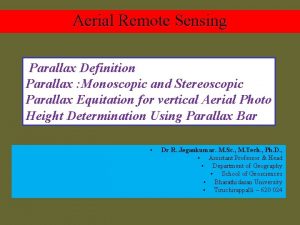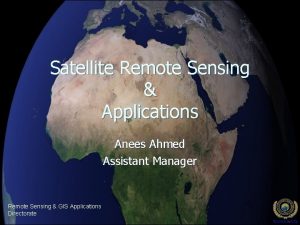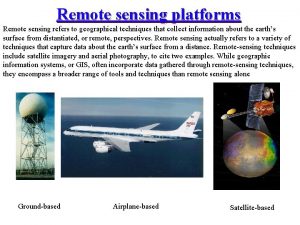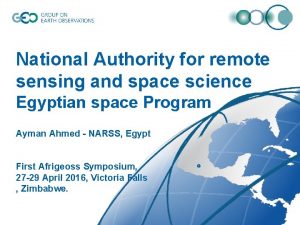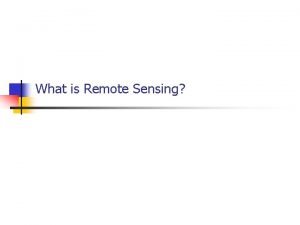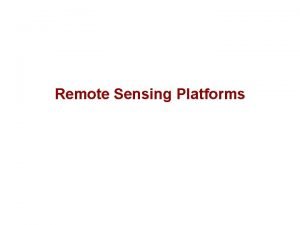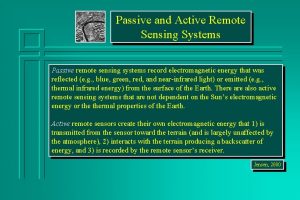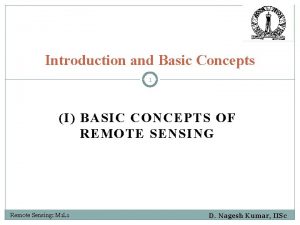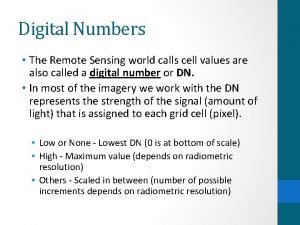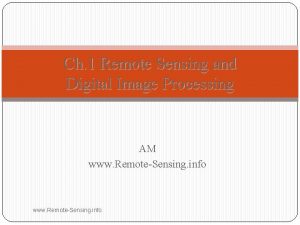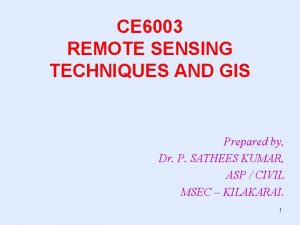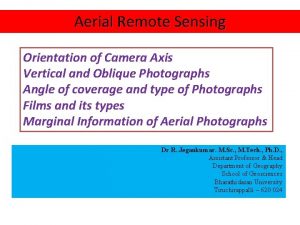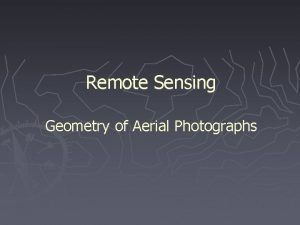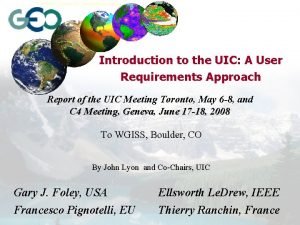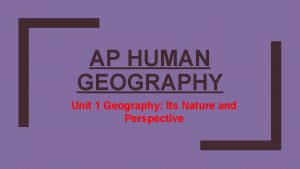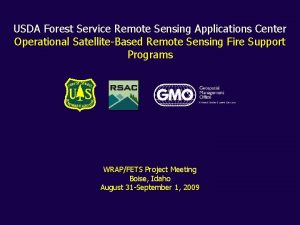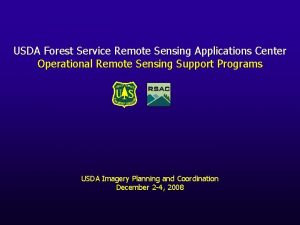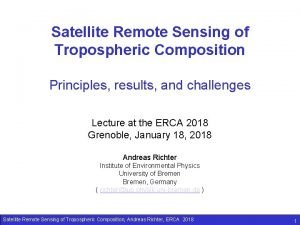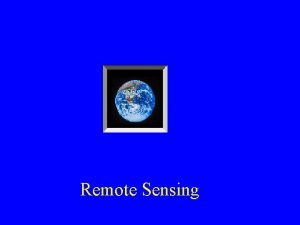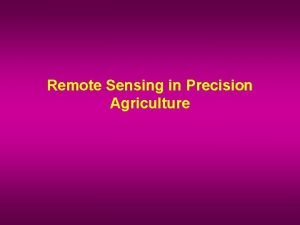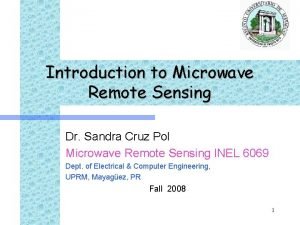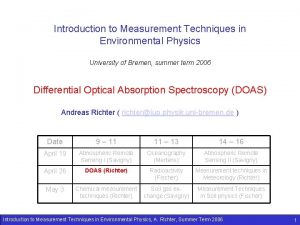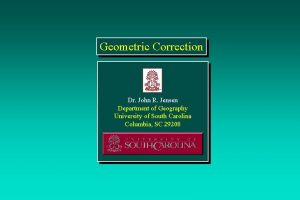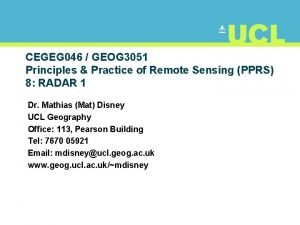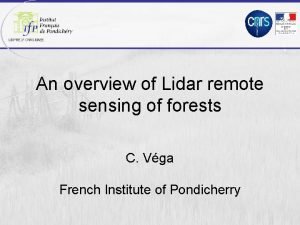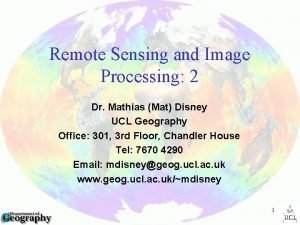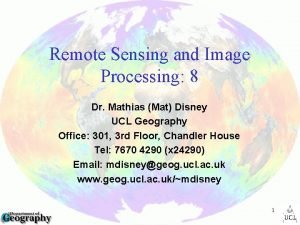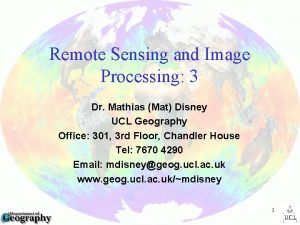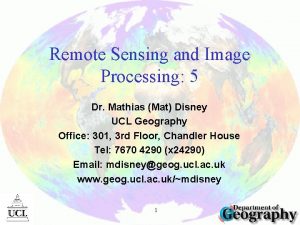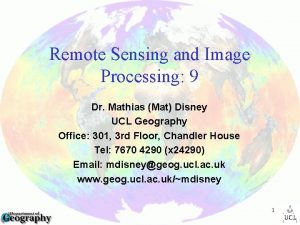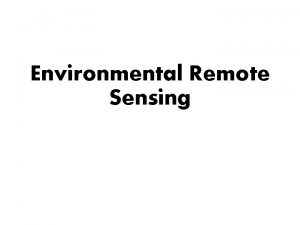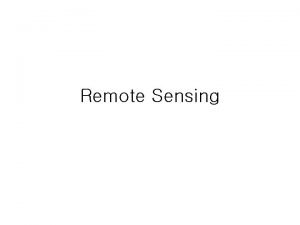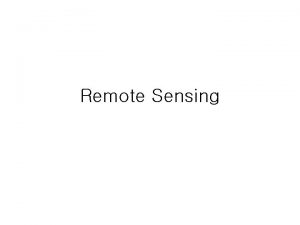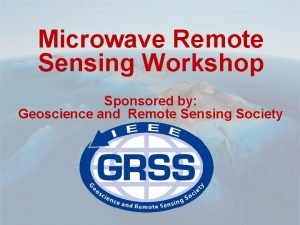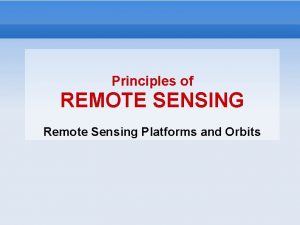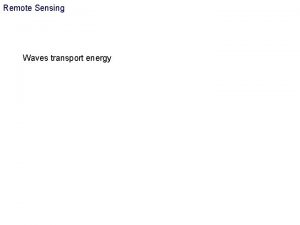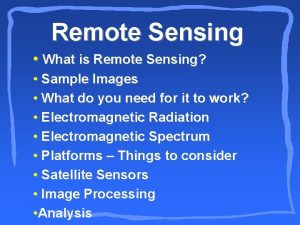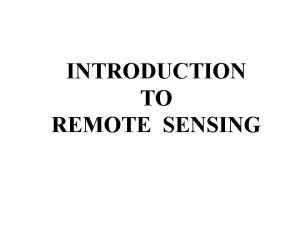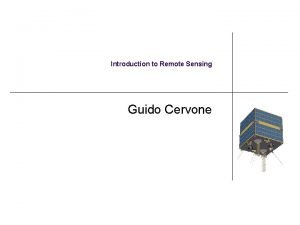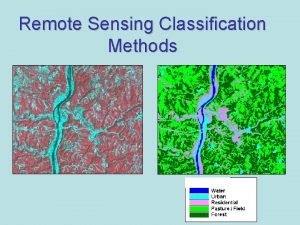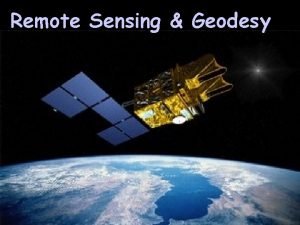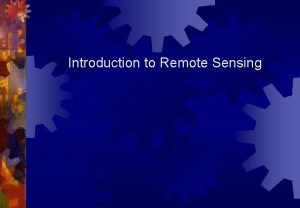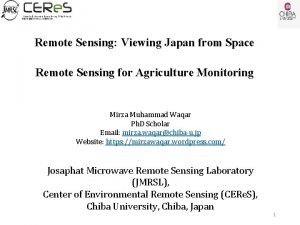Remote Sensing and Image Processing 4 Dr Mathias



























- Slides: 27

Remote Sensing and Image Processing: 4 Dr. Mathias (Mat) Disney UCL Geography Office: 301, 3 rd Floor, Chandler House Tel: 7670 4290 Email: mdisney@geog. ucl. ac. uk www. geog. ucl. ac. uk/~mdisney 1

Image display and enhancement Purpose • visual enhancement to aid interpretation • enhancement for improvement of information extraction techniques • Today we’ll look at image arithmetic and spectral indices 2

Basic image characteristics • pixel - DN • pixels - 2 D grid (array) • rows / columns (or lines / samples) • dynamic range – difference between lowest / highest DN 3

Aside: data volume? • Size of digital image data easy (ish) to calculate – size = (n. Rows * n. Columns * n. Bands * n. Bits. Per. Pixel) bits – in bytes = size / n. Bits. Per. Byte – typical file has header information (giving rows, cols, bands, date etc. ) (0, 0) n. Columns (0, 0) n. Bands n. Rows n. Bands n. Columns (r, c) Time 4

Aside • Several ways to arrange data in binary image file – Band sequential (BSQ) – Band interleaved by line (BIL) – Band interleaved by pixel (BIP) 5 From http: //www. profc. udec. cl/~gabriel/tutoriales/rsnote/cp 6 -4. htm

Data volume: examples • Landsat ETM+ image? Bands 1 -5, 7 (vis/NIR) – size of raw binary data (no header info) in bytes? – 6000 rows (or lines) * 6600 cols (or samples) * 6 bands * 1 byte per pixel = 237600000 bytes ~ 237 MB • actually 226. 59 MB as 1 MB 1 x 106 bytes, 1 MB actually 220 bytes = 1048576 bytes • see http: //www. matisse. net/mcgi-bin/bits. cgi – Landsat 7 has 375 GB on-board storage (~1500 images) Details from http: //ltpwww. gsfc. nasa. gov/IAS/handbook_htmls/chapter 6. htm 6

Data volume: examples • MODIS reflectance 500 m tile (not raw swath. . )? – 2400 rows (or lines) * 2400 cols (or samples) * 7 bands * 2 bytes per pixel (i. e. 16 -bit data) = 80640000 bytes = 77 MB – Actual file also contains 1 32 -bit QC (quality control) band & 2 8 -bit bands containing other info. • BUT 44 MODIS products, raw radiance in 36 bands at 250 m • Roughly 4800 * 36 * 2 ~ 1. 6 GB per tile, so 100 s GB data volume per day! Details from http: //edcdaac. usgs. gov/modis/mod 09 a 1. asp and http: //edcdaac. usgs. gov/modis/mod 09 ghk. asp 7

Image Arithmetic • Combine multiple channels of information to enhance features • e. g. NDVI (NIR-R)/(NIR+R) 8

Image Arithmetic • Combine multiple channels of information to enhance features • e. g. Normalised Difference Vegetation Index (NDVI) – (NIR-R)/(NIR+R) ranges between -1 and 1 – Vegetation MUCH brighter in NIR than R so NDVI for veg. close to 1 9

Image Arithmetic • Common operators: Ratio topographic effects visible in all bands FCC 10

Image Arithmetic • Common operators: Ratio (cha/chb) apply band ratio = NIR/red what effect has it had? 11

Image Arithmetic • Common operators: Ratio (cha/chb) • Reduces topographic effects • Enhance/reduce spectral features • e. g. ratio vegetation indices (SAVI, NDVI++) 12

Image Arithmetic • Common operators: Subtraction An active burn near the Okavango Delta, Botswana NOAA-11 AVHRR LAC data (1. 1 km pixels) September 1989. Red indicates the positions of active fires NDVI provides poor burned/unburned discrimination Smoke plumes >500 km long • examine CHANGE e. g. in land cover 13

Top left AVHRR Ch 3 day 235 Top Right AVHRR Ch 3 day 236 Bottom difference pseudocolur scale: black - none blue - low red - high Botswana (approximately 300 * 300 km) 14

Image Arithmetic • Common operators: Addition + – Reduce noise (increase SNR) • averaging, smoothing. . . – Normalisation (as in NDVI) = 15

Image Arithmetic • Common operators: Multiplication • rarely used per se: logical operations? – land/sea mask 16

Monitoring using. Vegetation Indices (VIs) • Basis: 17

Why VIs? • empirical relationships with range of vegetation / climatological parameters · f. APAR – fraction of absorbed photosynthetically active radiation (the bit of solar EM spectrum plants use) · NPP – net primary productivity (net gain of biomass by growing plants) · simple (understand/implement) · fast (ratio, difference etc. ) 18

Why VIs? · tracking of temporal characteristics / seasonality · can reduce sensitivity to: · · topographic effects (soil background) (view/sun angle (? )) (atmosphere) · whilst maintaining sensitivity to vegetation 19

Some VIs • RVI (ratio) • DVI (difference) • NDVI = Normalised Difference Vegetation Index i. e. combine RVI and DVI 20

Properties of NDVI? · Normalised, so ranges between -1 and +1 · If NIR >> red NDVI 1 · If NIR << red NDVI -1 · In practice, NDVI > 0. 7 almost certainly vegetation · NDVI close to 0 or slightly –ve definitelyy NOT vegetation! 21

why NDVI? · continuity (17 years of AVHRR NDVI) 22

limitations of NDVI · NDVI is empirical i. e. no physical meaning · atmospheric effects: · esp. aerosols (turbid - decrease) · direct means - atmospheric correction · indirect means: atmos. -resistant VI (ARVI/GEMI) · sun-target-sensor effects (BRDF): · MVC ? - ok on cloud, not so effective on BRDF · saturation problems: · saturates at LAI of 2 -3 23

24

saturated 25

Practical 2: image arithmetic · Calculate band ratios · What does this show us? · NDVI · Can we map vegetation? How/why? 26

MODIS NDVI Product: 1/1/04 and 5/3/04 27
 Parallax remote sensing
Parallax remote sensing Remote sensing image
Remote sensing image Ifov and fov in remote sensing
Ifov and fov in remote sensing National authority for remote sensing and space sciences
National authority for remote sensing and space sciences N-rays
N-rays Remote sensing platforms
Remote sensing platforms Active remote sensing
Active remote sensing Components of remote sensing
Components of remote sensing Digital number remote sensing
Digital number remote sensing Limitations of remote sensing
Limitations of remote sensing Idealized remote sensing system
Idealized remote sensing system Topographic map definition ap human geography
Topographic map definition ap human geography Global positioning system ap human geography
Global positioning system ap human geography Strip camera in remote sensing
Strip camera in remote sensing Geometry of an aerial photograph
Geometry of an aerial photograph Canada centre for remote sensing
Canada centre for remote sensing What is placelessness in ap human geography
What is placelessness in ap human geography Remote sensing applications center
Remote sensing applications center Remote sensing applications center
Remote sensing applications center Remote sensing physics
Remote sensing physics Microwave remote sensing lecture notes
Microwave remote sensing lecture notes Remote sensing in precision agriculture
Remote sensing in precision agriculture Aerial photography in remote sensing pdf
Aerial photography in remote sensing pdf Introduction to microwave remote sensing
Introduction to microwave remote sensing Remote sensing physics
Remote sensing physics Geometric errors in remote sensing
Geometric errors in remote sensing Cegeg
Cegeg Lidar remote sensing for forestry
Lidar remote sensing for forestry
